The choice of handle material for Western chef knives greatly influences their functionality, comfort, and overall aesthetic. Below is an overview of various handle materials used in Western chef knives, detailing their advantages and disadvantages.
1. Pakkawood
- Pros: Pakkawood is a durable composite material made from layers of wood and resin. It offers excellent water resistance, an attractive appearance, and is relatively easy to maintain.
- Cons: Although durable, Pakkawood can show signs of aging under extreme conditions. It is also often more expensive than traditional wood.

2. Bohemian Handle
- Pros: Bohemian handles are known for their unique, artistic designs, often combining multiple materials to create a distinctive look.
- Cons: The durability and maintenance can vary depending on the materials used. These handles tend to be more expensive due to their custom nature.

3. Wood Handle
- Pros: Traditional wood handles offer a classic, natural feel and are generally very comfortable to hold. They provide a warm aesthetic.
- Cons: Wood handles are prone to damage from moisture and may require regular maintenance to avoid warping or cracking.
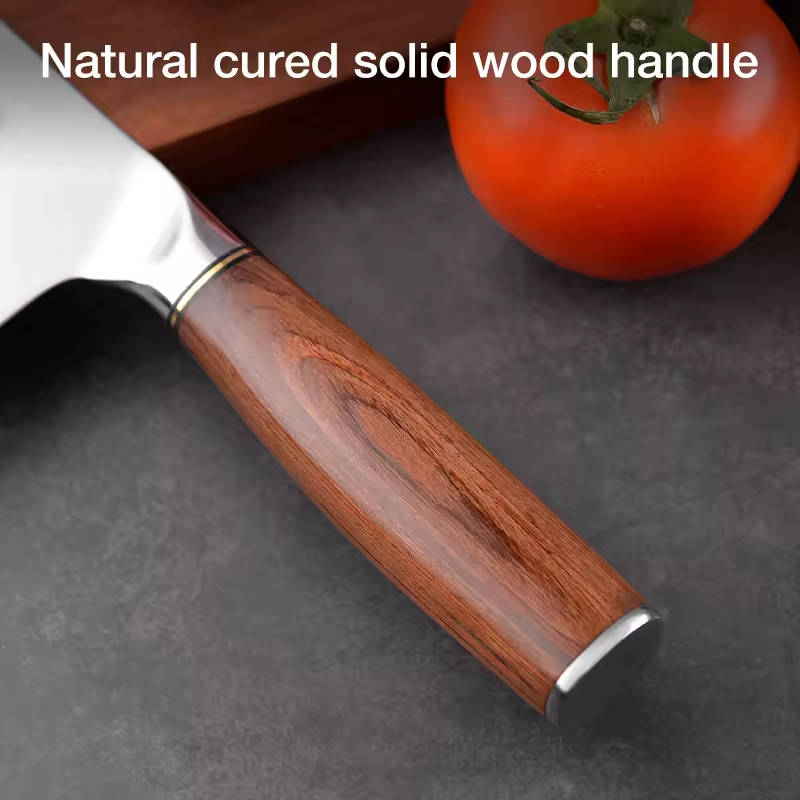
4. Sandalwood
- Pros: Sandalwood is known for its pleasant aroma and elegant appearance. It is durable and offers a luxurious feel.
- Cons: Sandalwood can be quite heavy and expensive. It also requires regular care to prevent drying and cracking.
5. Olive Wood
- Pros: Olive wood is prized for its unique grain patterns and natural oil content, which makes it resistant to water. It is durable and has a comfortable feel.
- Cons: The high cost and the need for regular maintenance can be drawbacks. It can also be heavy, affecting knife balance.
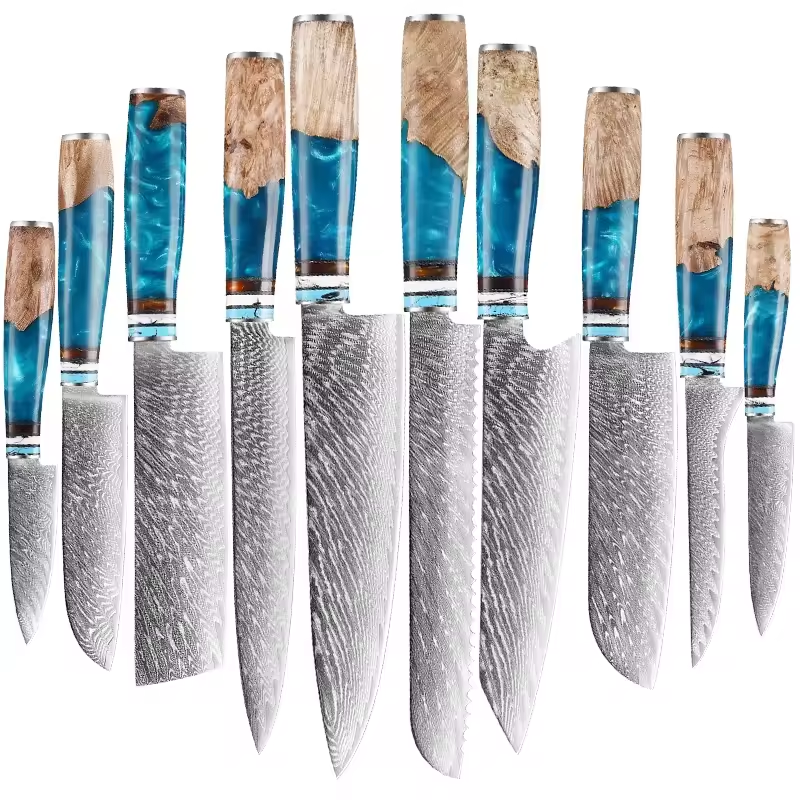
6. Resin & Solid Wood
- Pros: This combination blends the natural beauty of wood with the durability of resin. It is resistant to water and less likely to warp.
- Cons: Over time, the resin can wear down, and this handle can be more expensive compared to single-material options.
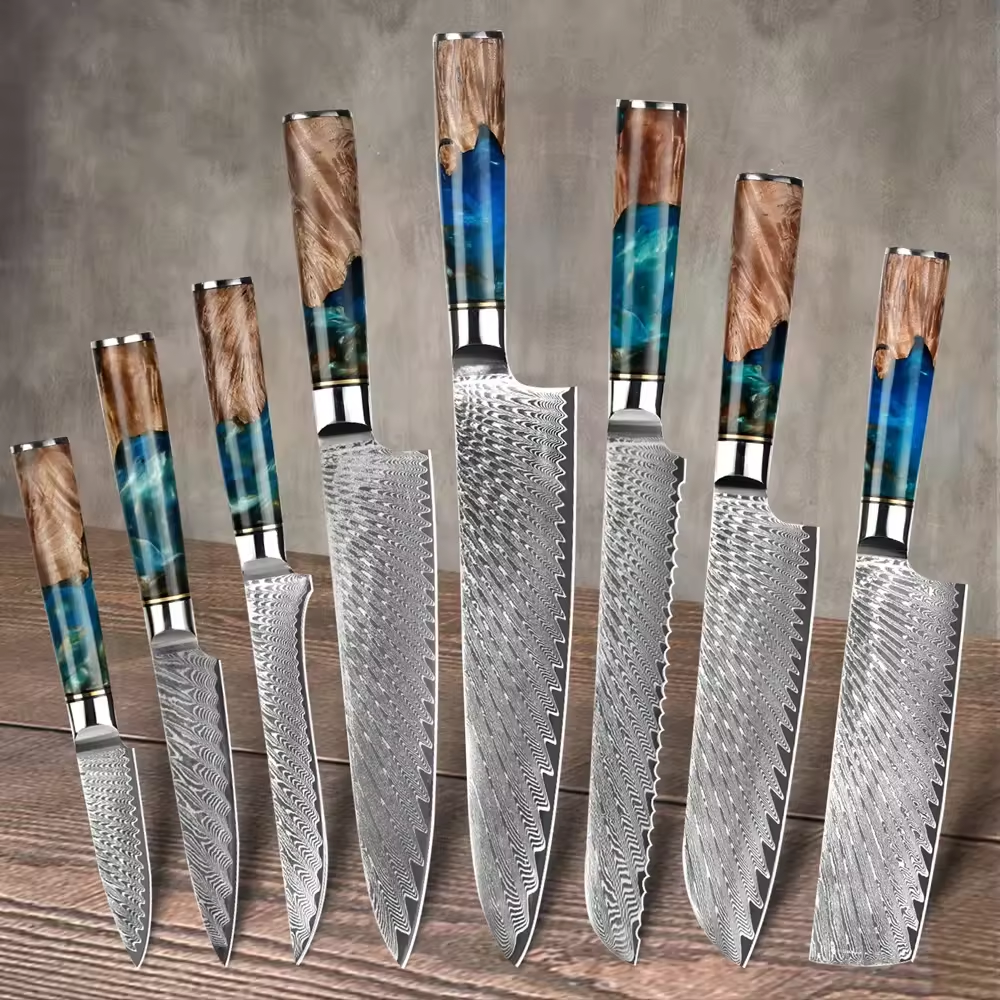
7. Wenge Handle
- Pros: Wenge is a very dense, durable wood with a deep, rich color. It provides a luxurious feel and high resistance to wear.
- Cons: It is relatively heavy, which can affect the knife’s balance. Wenge is also quite costly.
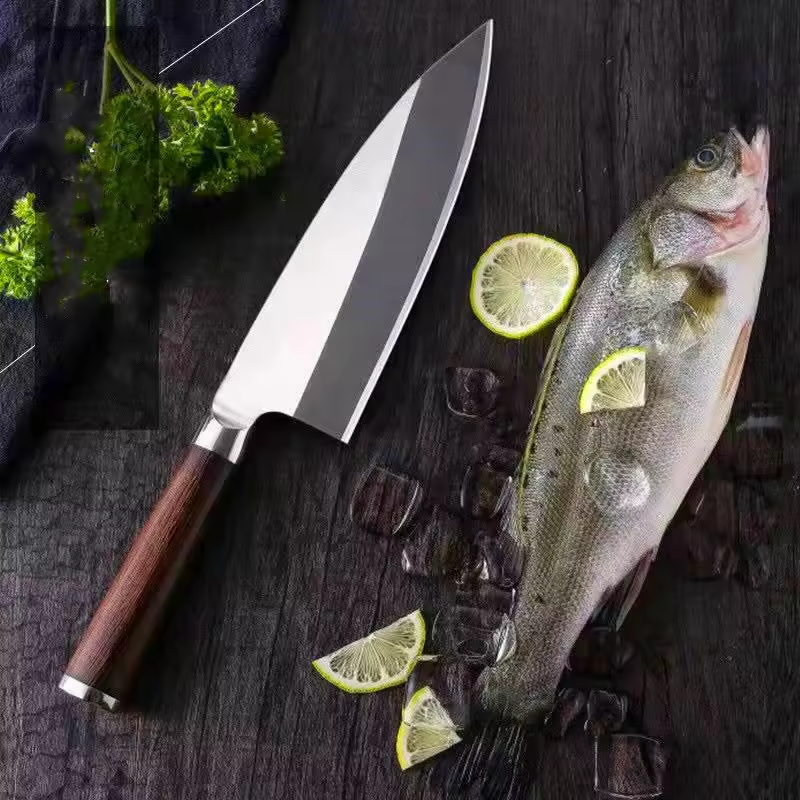
8. Acrylic & Carbon Fiber
- Pros: This combination offers extreme durability and lightweight characteristics. It is resistant to moisture and damage, and has a sleek, modern look.
- Cons: It can feel less warm and comfortable compared to natural materials. It is often more expensive than other options.
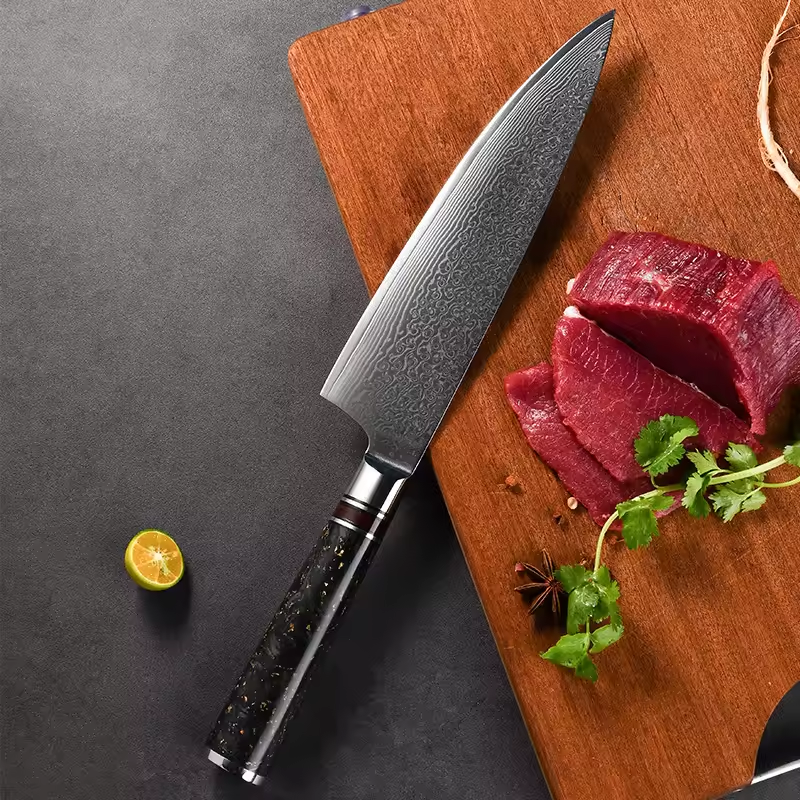
9. Ebony Wood
- Pros: Ebony is a luxurious, dense wood with a dark color and smooth texture. It is durable and offers a premium feel.
- Cons: It is expensive and can be heavy, which might affect the knife’s handling and balance. It also requires regular maintenance.
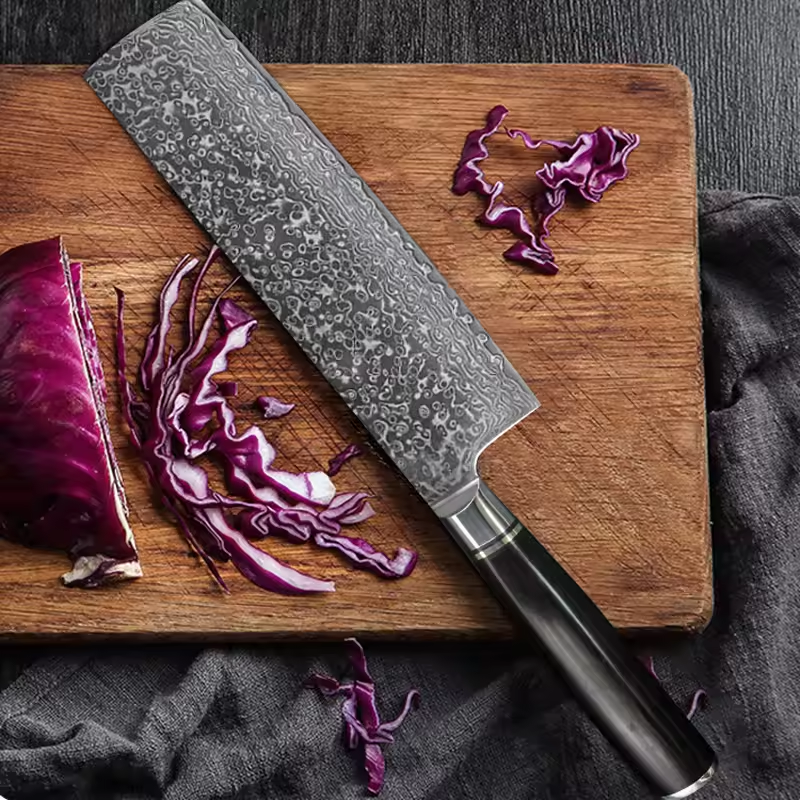
10. G10 Fiber Handle
- Pros: G10 is a high-strength, lightweight composite material that is resistant to moisture and chemicals. It provides a durable, non-slip grip.
- Cons: The handle can feel cold and less natural compared to wood. It is also relatively expensive.
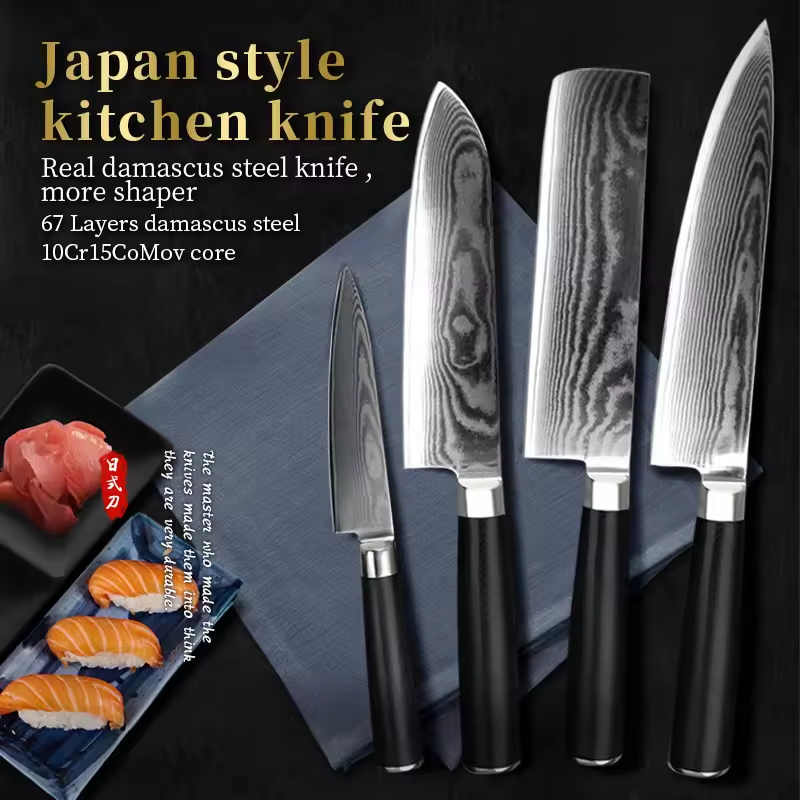
11. Resin
- Pros: Resin handles are highly durable, water-resistant, and available in a wide range of colors and patterns. They are easy to clean and maintain.
- Cons: They may not offer the same level of comfort as natural materials, and can wear down over time.
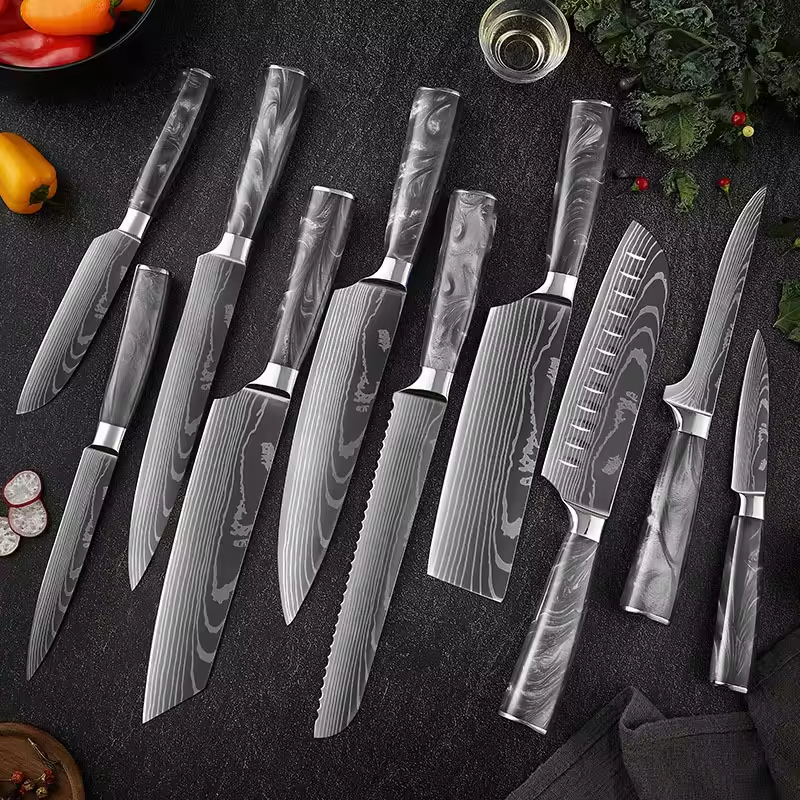
12. Stainless Steel
- Pros: Stainless steel is resistant to rust and corrosion and provides a sleek, modern look. It is relatively affordable and low-maintenance.
- Cons: Stainless steel handles can feel cold and less comfortable compared to wood. They also lack the aesthetic appeal of more traditional materials.
13. Chicken Wing Wood
- Pros: Chicken Wing wood features unique patterns and provides a comfortable grip. It offers a distinctive appearance.
- Cons: It can be expensive and requires regular maintenance to prevent damage and maintain its appearance.
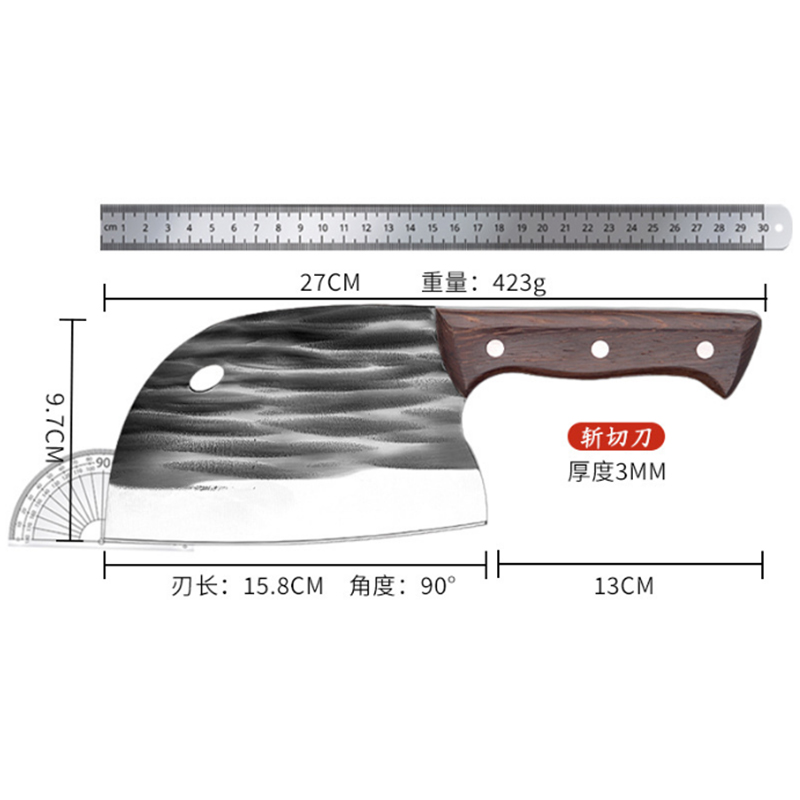
14. Ivory & G10
- Pros: This combination pairs the luxury of ivory with the durability of G10, creating an elegant and long-lasting handle.
- Cons: Ivory can be very expensive and may raise ethical concerns. G10 might feel less warm compared to natural materials.
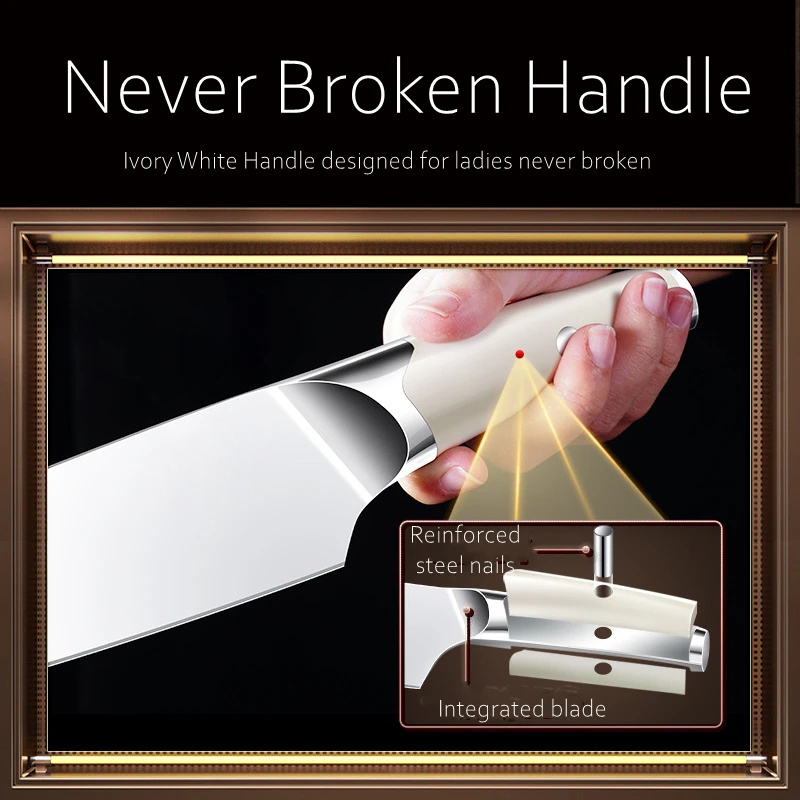
15. G10 + Glass Fiber
- Pros: Adding glass fiber to G10 enhances its strength and durability while maintaining a relatively lightweight profile. It is highly resistant to damage.
- Cons: The handle may feel less comfortable and warm compared to traditional materials, and it can be on the pricier side.

16. Maple Burl Handle
- Pros: Maple burl wood offers a unique, intricate grain pattern and a comfortable grip. It is durable and visually appealing.
- Cons: It is relatively expensive and may require regular maintenance to avoid damage.
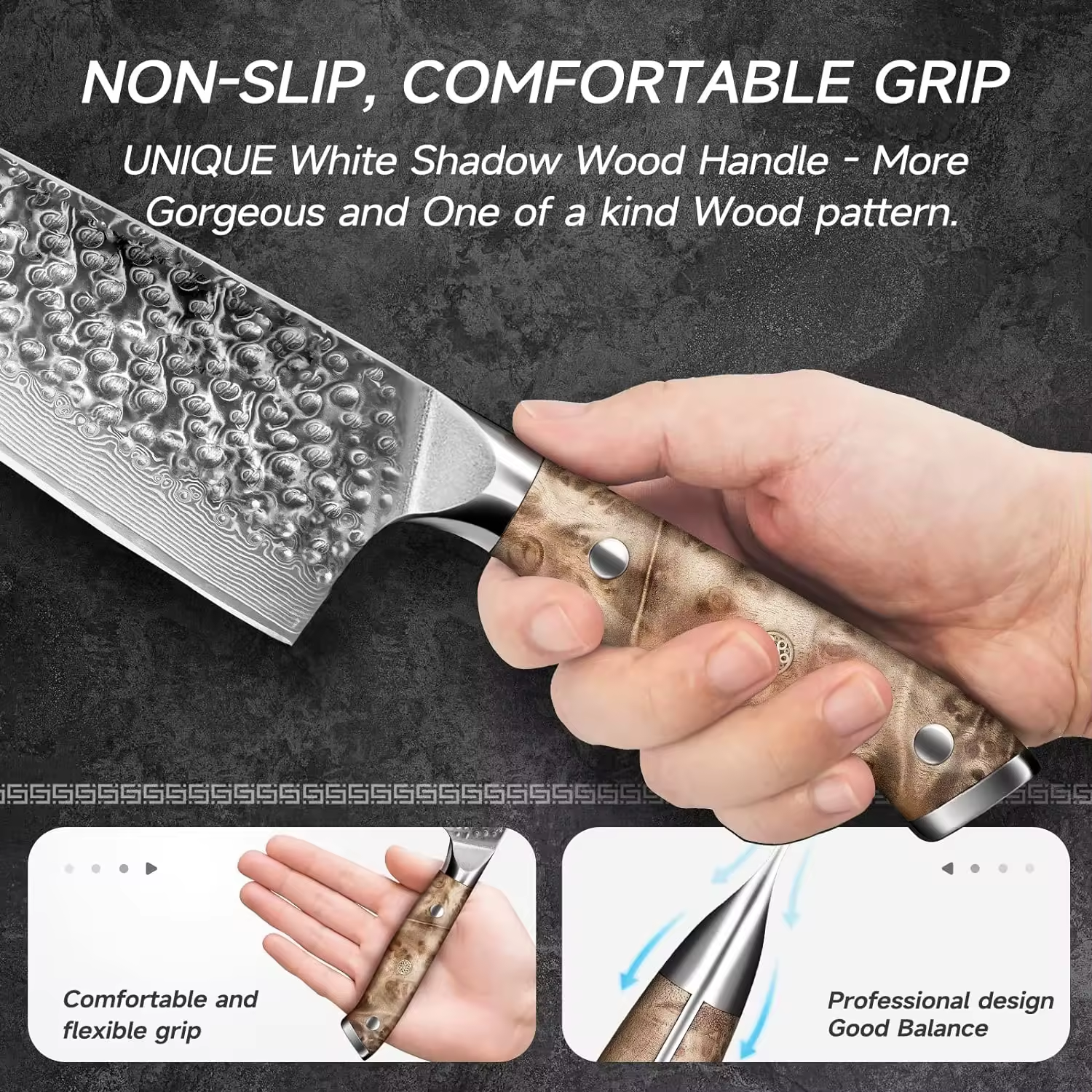
17. Abalone Shell Handle
- Pros: Abalone shells provide a stunning, iridescent appearance that is both luxurious and unique.
- Cons: They are delicate and prone to chipping or cracking. The handle is also quite expensive.

18. Yellow Sandalwood
- Pros: This wood is valued for its rich color and pleasant aroma. It is durable and offers a luxurious feel.
- Cons: Yellow sandalwood is heavy and costly. It requires regular care to prevent damage.
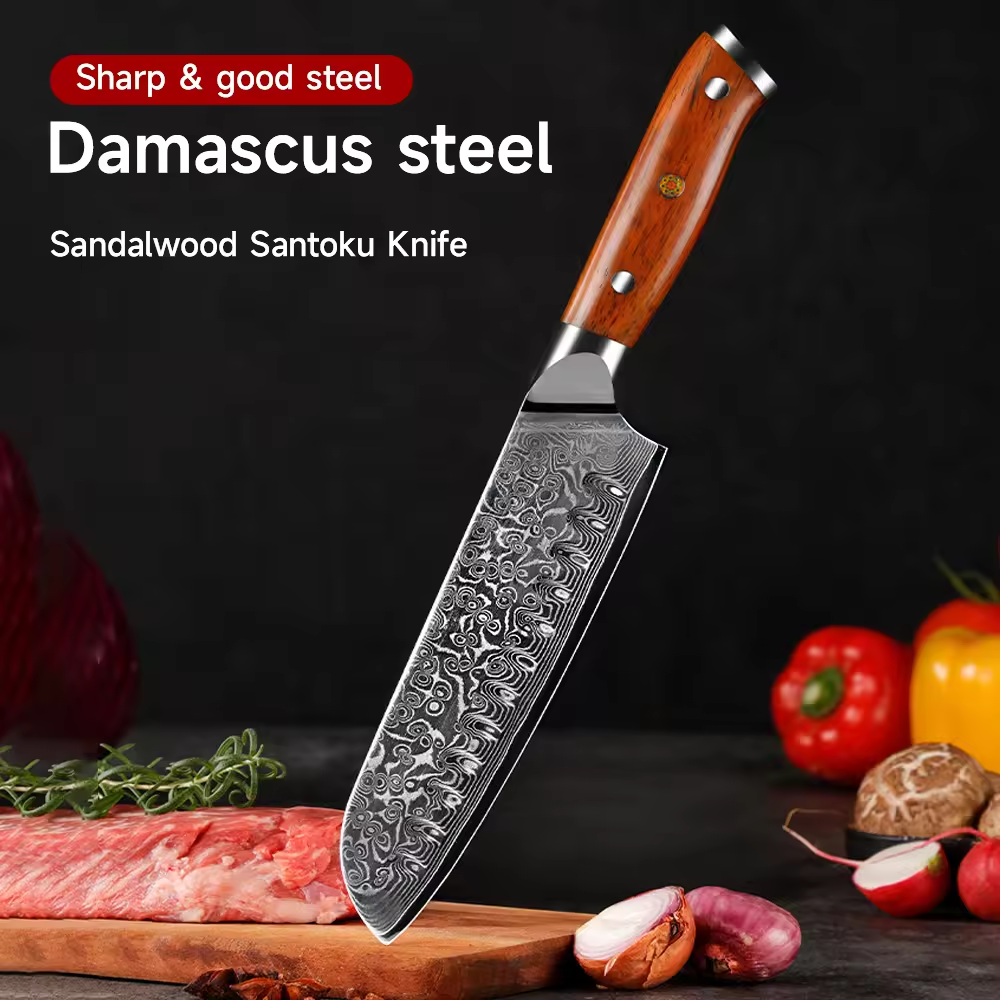
19. Carbon Fiber
- Pros: Carbon fiber is extremely lightweight and strong, with a modern appearance. It is highly durable and resistant to wear.
- Cons: It can feel rigid and less comfortable compared to natural materials. The cost is usually higher.
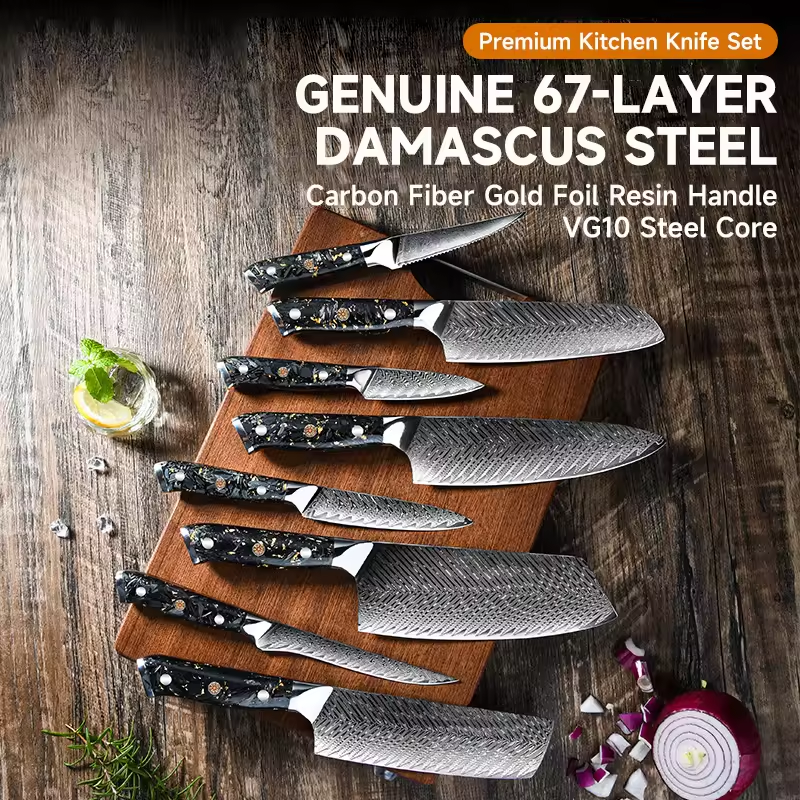
20. Rosewood Handle
- Pros: Rosewood is dense and durable with a warm, natural look. It provides a comfortable grip and is resistant to wear.
- Cons: It can be expensive and heavy, potentially impacting the knife’s balance. It also requires regular maintenance.
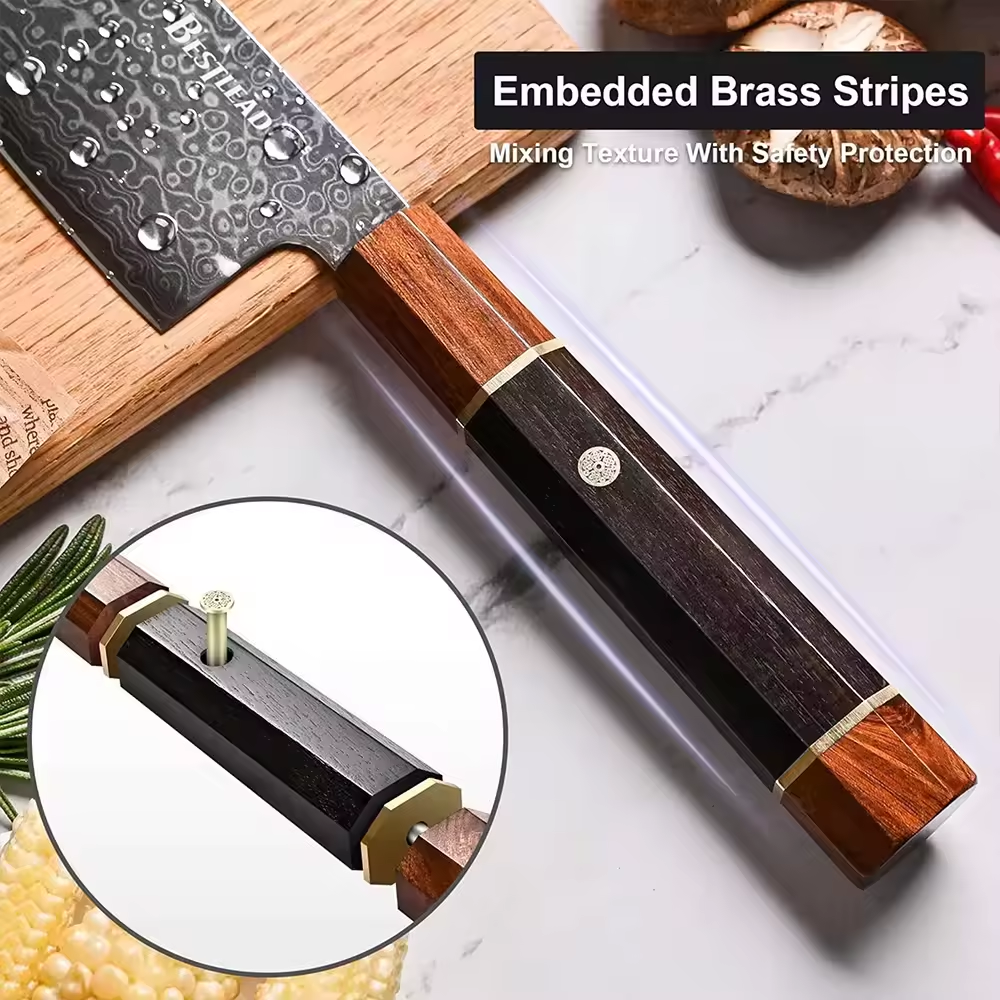
21. Natural Olive Wood
- Pros: Olive wood is known for its unique grain patterns and natural oils that make it resistant to water. It is durable and comfortable to handle.
- Cons: The high cost and need for regular maintenance can be drawbacks. It can also be quite heavy.
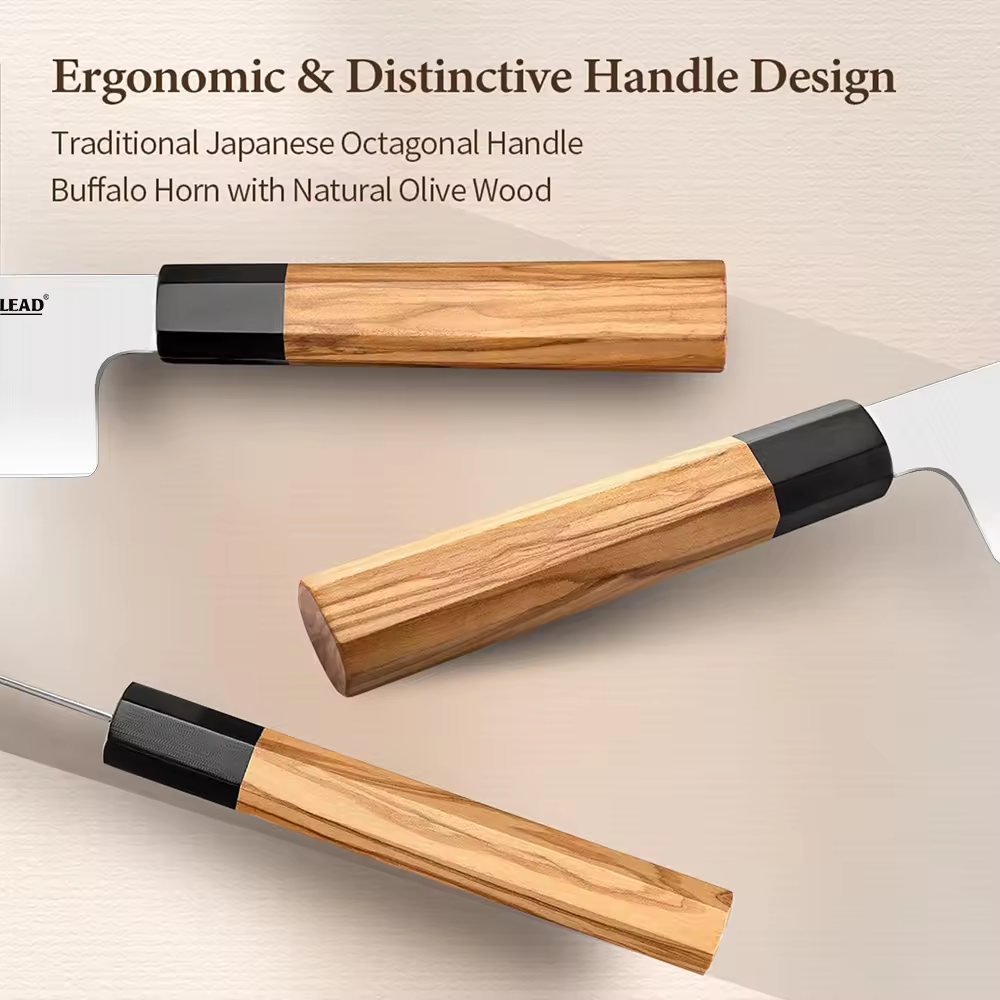
22. Wooden Handle
- Pros: Traditional wooden handles are aesthetically pleasing and offer a warm, natural grip. They are generally comfortable and classic.
- Cons: Wood is prone to damage from moisture and may require frequent maintenance to prevent warping or cracking.
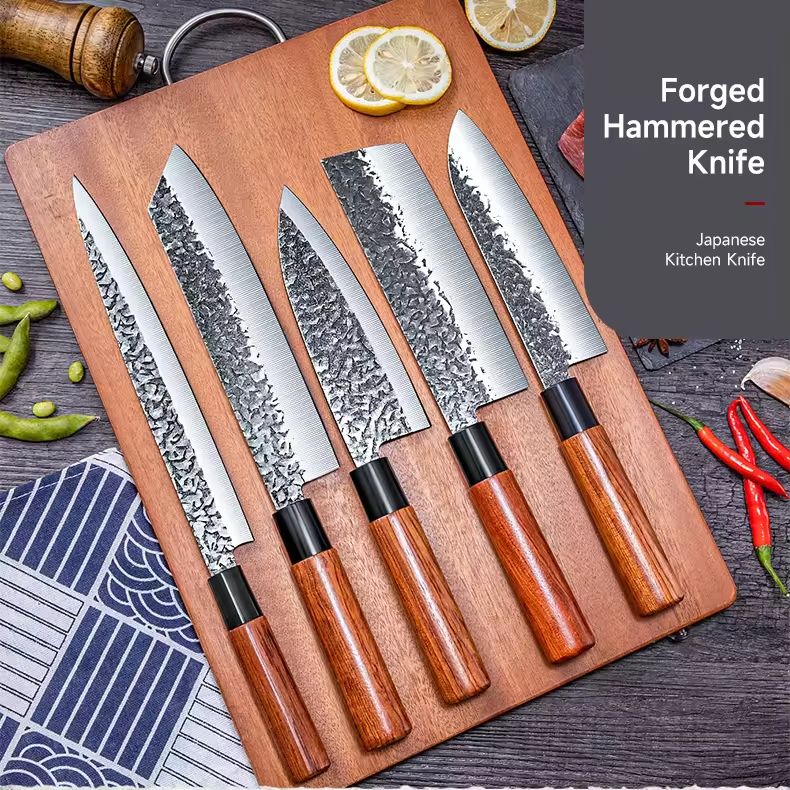
23.Blue Resin and Color Wood
- Pros: This handle design combines ergonomic features with striking blue resin and colored wood for enhanced comfort and visual appeal.
- Cons: The use of resin can make the handle feel less natural, and the overall cost may be higher due to the materials used.
24. 430 Stainless Steel Handle
- Pros: 430 stainless steel handles are rust-resistant and provide a modern, sleek look. They are relatively affordable and easy to maintain.
- Cons: Stainless steel can feel cold and less comfortable compared to wooden or composite handles. It may also lack the aesthetic appeal of traditional materials.
25. PP+TPR (Polypropylene + Thermoplastic Rubber)
- Pros: This material combination offers a comfortable, non-slip grip with good durability and resistance to moisture. It is cost-effective and low-maintenance.
- Cons: The appearance may not be as premium or visually appealing as wood or high-end composites. It may also feel less natural.
26. Red Pear Wood
- Pros: Red pear wood features a distinctive reddish hue and is quite durable. It provides a comfortable grip and a unique aesthetic.
- Cons: It can be costly and may require regular maintenance to preserve its appearance and integrity.
27. Micarta Handle
- Pros: Micarta is a robust composite material known for its toughness, resistance to moisture, and impact durability. It offers a solid, comfortable grip.
- Cons: Micarta handles can feel less warm and natural compared to wood. They can also be on the pricier side.
28. Zebra Wood
- Pros: Zebra wood is known for its striking, striped grain pattern, providing an eye-catching appearance. It is durable and offers a good grip.
- Cons: It can be expensive and requires regular maintenance to keep it looking its best.
29. Cow Horn & Milky Moon Resin Casting Handle
- Pros: This handle combines the natural beauty of cow horn with the durability of milky moon resin, offering a unique and resistant handle.
- Cons: It is typically more expensive and the cow horn may require special care. The handle’s comfort may vary compared to more traditional materials.
Each handle material provides a unique set of characteristics, and the best choice depends on personal preferences, budget, and intended use. Balancing aesthetics, durability, and comfort will help you find the ideal handle for your Western chef’s knife.
 Yangjiang Anthony Facas Co., Ltd
Yangjiang Anthony Facas Co., Ltd